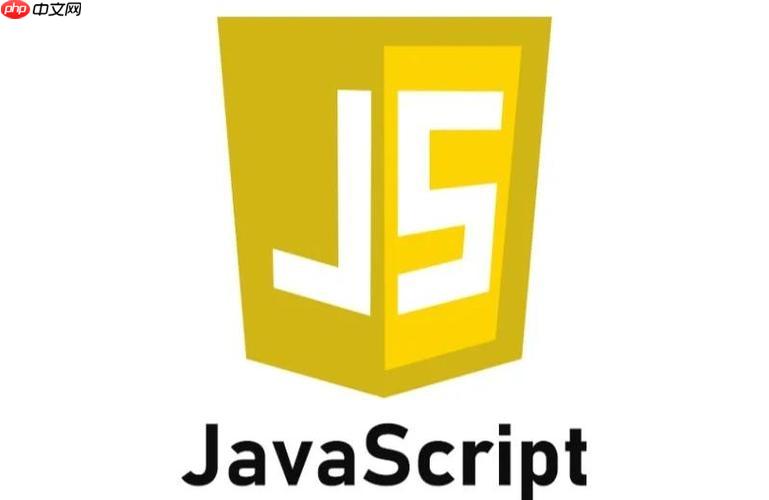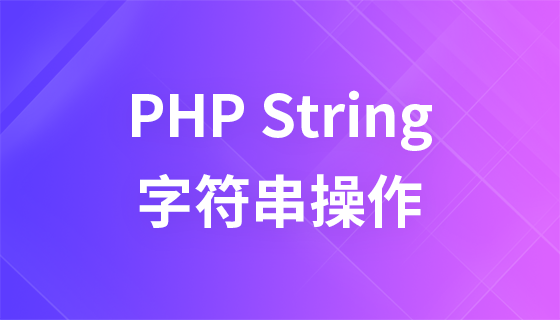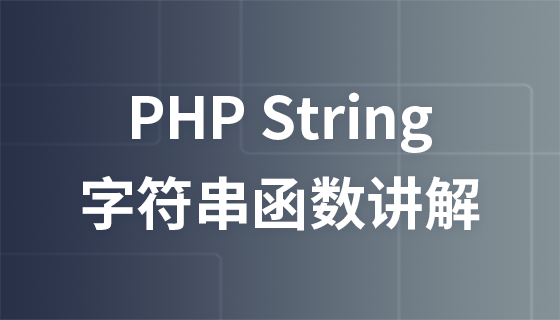判断字符串是否包含子串最推荐使用includes(),因其语义清晰且直接返回布尔值;2. 若需获取子串位置或兼容旧浏览器,则选用indexof(),通过返回值是否为-1判断存在性;3. 对于复杂模式匹配或不区分大小写的查找,应使用正则表达式,其中test()方法适合布尔判断,match()可返回匹配详情;4. 实现不区分大小写查找时,可统一转换大小写后比较,或更优地使用正则表达式i标志;5. 需注意空字符串始终被视为包含、长字符串高频操作的性能影响、旧浏览器对includes()不支持及复杂unicode字符的处理限制,选择方法时应权衡需求、可读性与性能,最终方案需完整考虑场景并避免常见陷阱。

在JavaScript中判断一个字符串是否包含另一个子串,我们通常会用到几种内置方法:
String.prototype.includes()
String.prototype.indexOf()
判断字符串是否包含子串,最直接且现代的方式是使用
includes()
indexOf()
以下是具体的实现方式:
1. 使用 String.prototype.includes()
这是ES6引入的方法,也是我个人最推荐的,因为它语义最清晰,直接返回一个布尔值,表明是否找到了子串。
const mainString = "Hello, world! Welcome to JavaScript.";
const subString1 = "world";
const subString2 = "TypeScript";
console.log(mainString.includes(subString1)); // true
console.log(mainString.includes(subString2)); // false
// 也可以指定开始搜索的位置
console.log(mainString.includes("world", 10)); // false (从索引10开始,"world"在前面)2. 使用 String.prototype.indexOf()
这是一个历史悠久的方法,如果找到子串,它会返回子串首次出现的索引位置;如果没有找到,则返回
-1
const mainString = "Hello, world! Welcome to JavaScript.";
const subString1 = "world";
const subString2 = "TypeScript";
console.log(mainString.indexOf(subString1)); // 7 (子串"world"从索引7开始)
console.log(mainString.indexOf(subString2)); // -1
// 判断是否包含
if (mainString.indexOf(subString1) !== -1) {
console.log("包含子串:", subString1);
}
// 同样可以指定开始搜索的位置
console.log(mainString.indexOf("world", 10)); // -13. 使用正则表达式 (RegExp.prototype.test()
String.prototype.match()
正则表达式提供了最强大的模式匹配能力,尤其当你需要进行复杂匹配(如不区分大小写、匹配多种模式等)时,它几乎是唯一的选择。
RegExp.prototype.test()
const mainString = "Hello, world! Welcome to JavaScript."; const pattern1 = /world/; // 匹配"world" const pattern2 = /TypeScript/; // 匹配"TypeScript" console.log(pattern1.test(mainString)); // true console.log(pattern2.test(mainString)); // false // 不区分大小写匹配 const caseInsensitivePattern = /javascript/i; // 'i' 标志表示不区分大小写 console.log(caseInsensitivePattern.test(mainString)); // true
String.prototype.match()
g
null
test()
test()
const mainString = "Hello, world! Welcome to JavaScript.";
const pattern1 = /world/;
const pattern2 = /TypeScript/;
console.log(mainString.match(pattern1)); // ["world", index: 7, input: "...", groups: undefined]
console.log(mainString.match(pattern2)); // null
if (mainString.match(pattern1)) {
console.log("包含子串 (通过match):", pattern1);
}includes()
indexOf()
在我看来,选择哪种方法,确实是一个需要结合场景和个人偏好的问题。我经常会遇到这样的决策点。
如果你只是想简单地知道“有没有”某个子串,而且你的目标环境支持ES6(现在绝大多数现代浏览器和Node.js都支持),那么
String.prototype.includes()
!== -1
而
String.prototype.indexOf()
-1
indexOf()
indexOf()
至于正则表达式,那简直是字符串匹配领域的瑞士军刀。如果你的需求不仅仅是简单的子串匹配,比如你需要:
这时候,
includes()
indexOf()
includes()
indexOf()
实现不区分大小写的子串查找,这在实际开发中非常常见,比如搜索功能,用户输入“apple”,你希望也能匹配到“Apple”或者“APPLE”。这里有几种方法,我通常会根据具体情况来选择。
1. 使用 toLowerCase()
toUpperCase()
这是最直观也最容易理解的方法,适用于
includes()
indexOf()
const mainString = "Hello, JavaScript! Welcome to My Website."; const searchLower = "javascript"; const searchUpper = "JAVASCRIPT"; // 转换为小写后使用 includes() console.log(mainString.toLowerCase().includes(searchLower.toLowerCase())); // true console.log(mainString.toLowerCase().includes(searchUpper.toLowerCase())); // true // 转换为大写后使用 indexOf() console.log(mainString.toUpperCase().indexOf(searchLower.toUpperCase()) !== -1); // true console.log(mainString.toUpperCase().indexOf(searchUpper.toUpperCase()) !== -1); // true
这种方法的优点是简单易懂,兼容性好。但缺点是,如果你的主字符串非常长,或者你需要进行大量的查找操作,每次都对字符串进行
toLowerCase()
toUpperCase()
2. 使用正则表达式的 i
这是处理不区分大小写匹配的“王道”方法,也是我个人最推荐的,尤其当你不只是判断包含,还可能涉及到更复杂的模式匹配时。正则表达式提供了一个
i
const mainString = "Hello, JavaScript! Welcome to My Website."; const pattern = /javascript/i; // 'i' 标志表示不区分大小写 console.log(pattern.test(mainString)); // true console.log(mainString.match(pattern)); // ["JavaScript", index: 7, input: "...", groups: undefined] const anotherPattern = /website/i; console.log(anotherPattern.test(mainString)); // true
使用正则表达式的
i
/js(cript)?/i
toLowerCase()
在JavaScript中查找子串,虽然看似简单,但在实际开发中,确实会遇到一些需要注意的细节,甚至是一些不易察觉的“坑”,以及在特定场景下需要考虑的性能问题。
1. 空字符串的“陷阱”
这是一个我偶尔会忽略,但一旦遇到就可能导致逻辑错误的小细节。当你要查找的子串是一个空字符串(
""
includes()
indexOf()
const myString = "hello world";
console.log(myString.includes("")); // true
console.log(myString.indexOf("")); // 0
console.log("".includes("")); // true
console.log("".indexOf("")); // 0includes("")true
indexOf("")0
0
2. 性能考量:长字符串与高频操作
对于绝大多数前端应用场景,字符串查找的性能差异通常可以忽略不计。现代JavaScript引擎对这些内置方法都做了高度优化。然而,在以下特定情况下,你可能需要稍微留意:
toLowerCase()
toUpperCase()
在这种极端情况下,通常
indexOf()
includes()
3. 浏览器兼容性(历史遗留问题)
虽然现在已经不是大问题了,但如果你需要支持非常老的浏览器(比如IE11或更早),
String.prototype.includes()
// 在不支持ES6的环境中,这会抛出TypeError
// "abc".includes("b")在过去,为了兼容性,我们通常会使用
indexOf() !== -1
includes()
includes()
4. Unicode与复杂字符集
JavaScript的字符串方法通常能很好地处理Unicode字符。例如,
"你好世界".includes("世界")é
e
´
includes()
indexOf()
总的来说,在日常开发中,
includes()
indexOf()
以上就是js怎么判断字符串是否包含子串的详细内容,更多请关注php中文网其它相关文章!

每个人都需要一台速度更快、更稳定的 PC。随着时间的推移,垃圾文件、旧注册表数据和不必要的后台进程会占用资源并降低性能。幸运的是,许多工具可以让 Windows 保持平稳运行。




Copyright 2014-2025 https://www.php.cn/ All Rights Reserved | php.cn | 湘ICP备2023035733号